Floor Lamp Basics
A floor lamp, often known as a standing lamp, is a tall, freestanding light fixture designed to stand on the floor. Floor lamps typically consist of a base, a pole, and a lampshade, which houses the light bulb. The base keeps the lamp stable, while the pole can come in various styles and finishes, supporting the lampshade and bulb at the top.
The Evolution of Floor Lamps
History of Floor Lamps
Floor lamps started in the late 1800s as basic lights, later becoming stylish with ergonomic designs and metal finishes. Lamps used to be made of wood and brass, but now they use electric lighting and are important for home decoration.
From Functionality to Decorative Element
Floor lamps transitioned from purely functional to key decorative pieces in homes. New technology and creative designs made them popular in the 1950s, offering different styles for both lighting and looks. Today's floor lamps blend functionality with design, incorporating energy-efficient and smart technologies, reflecting ongoing creativity in interior design.
The Anatomy of a Floor Lamp
Key Components of a Floor Lamp
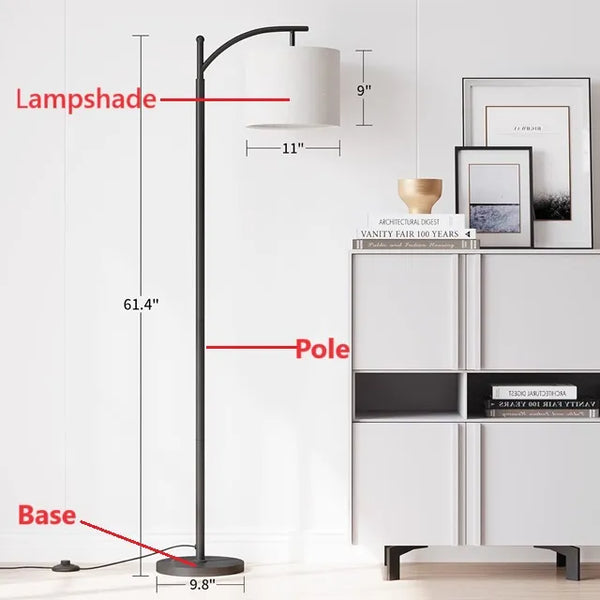
A floor lamp consists of four main components: the base, pole, lampshade, and light source. The base provides stability, preventing the lamp from tipping over. The pole connects the base to the lampshade and often includes adjustable features to change the lamp's height or direction. The lampshade diffuses and directs the light, influencing the ambiance of a room.
Finally, the light source—traditionally a bulb—illuminates the space. Each component plays a crucial role in the lamp's functionality and aesthetic appeal.
Design Variations and Functionality
Floor lamp designs vary widely, each with implications for functionality and space use. For instance, a lamp with a movable pole or arm allows you to adjust the light to your desired location. Lampshades come in different shapes and materials, which can change how light spreads and the feel of a room. Bases of lamps vary in weight and size, with heavier bases better for busy areas to avoid tipping over.
Lamps come in various designs to suit personal preferences and serve different functions in a room. Some are meant to provide focused light, while others are designed to create a cozy atmosphere. Some lamps make a bold statement in a room.
Types of Floor Lamps
Traditional Floor Lamps
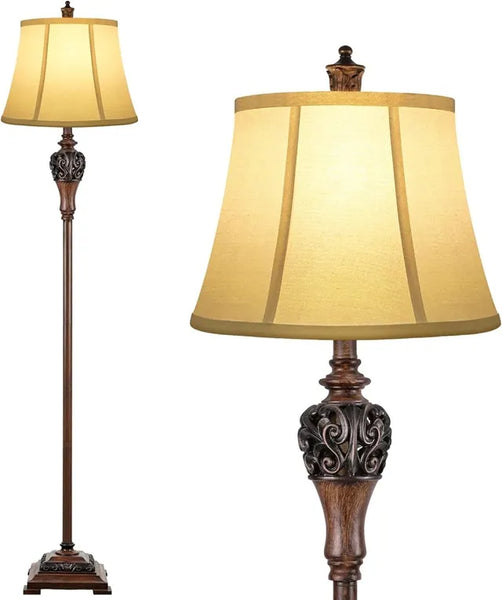
Traditional floor lamps feature classic designs with a single pole and a lampshade. They fit seamlessly into rooms with classic, rustic, or vintage decor. Ideal for living rooms and bedrooms, they provide a soft, ambient light, perfect for reading or relaxing.
Arc Floor Lamps
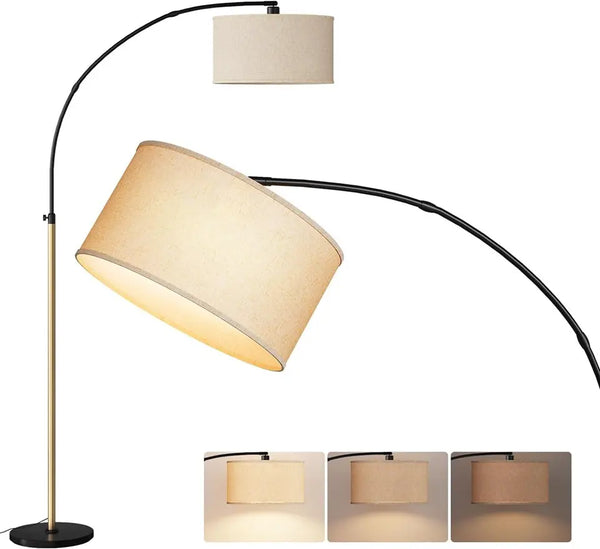
Arc floor lamps have a curved pole that extends over seating areas, offering direct lighting. They're great for modern living spaces, reading nooks, or over a dining table. Their unique shape makes them suitable for contemporary and minimalist interiors, adding a stylish focal point.
Tripod Floor Lamps
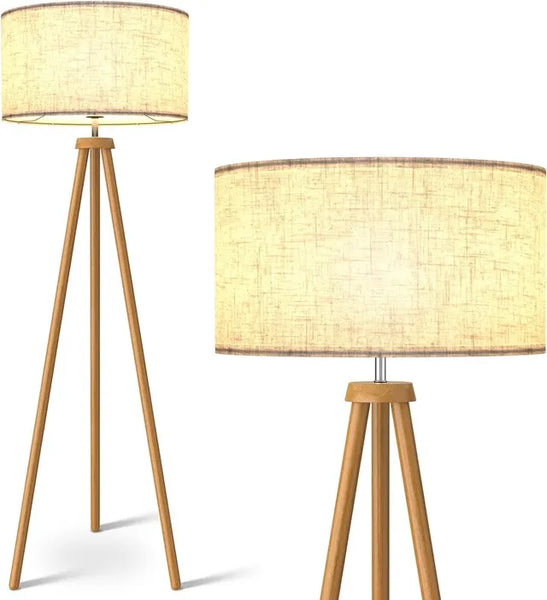
Tripod floor lamps stand on three legs, offering stability and a distinct look. They blend well in eclectic, modern, or industrial settings. Ideal for living rooms, studios, or home offices, they provide focused or ambient lighting, depending on the lampshade used.
Torchiere Floor Lamps
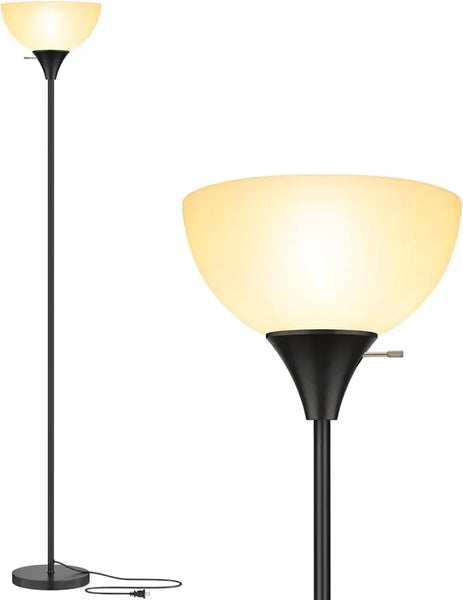
Torchiere lamps direct light upwards, illuminating the ceiling and diffusing light softly into the room. They are best suited for spaces needing ambient lighting, like bedrooms and living rooms. Their sleek design complements modern, minimalist, and traditional interiors.
Reading Floor Lamps
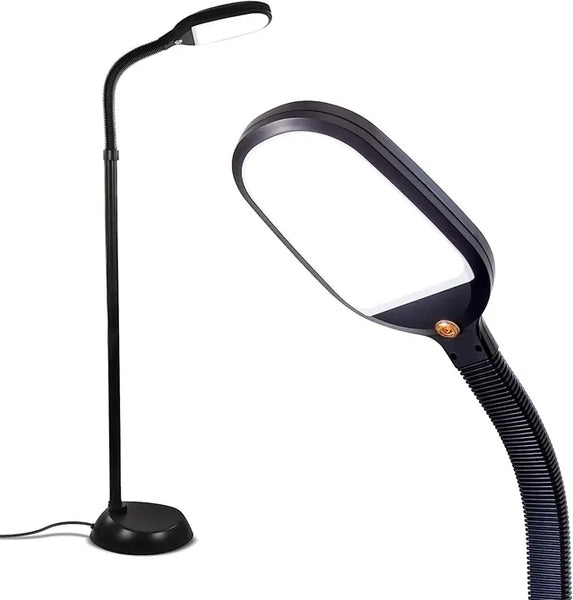
Reading floor lamps are designed with adjustability in mind, perfect for directing light precisely where needed. They're ideal next to a favorite reading chair or bedside, providing focused light without straining the eyes. Suitable for study rooms, bedrooms, and home offices.
Modern Floor Lamps

Modern floor lamps feature contemporary designs, often incorporating innovative materials and shapes. They fit well in minimalist, avant-garde, or contemporary interiors, adding both functionality and style. Perfect for living rooms, bedrooms, and home offices looking for a modern touch.
Discover our collection of hot sale floor lamps, featuring styles that cater to every aesthetic and functional need.
How to choose the right floor lamp
Determine the Purpose
Identify why you need a floor lamp. Is it for reading, ambient lighting, or as a statement piece? Your purpose will guide your choice in style, brightness, and placement.
Consider the Style
Match the lamp with your room's decor. Whether traditional, modern, or eclectic, the lamp should complement your existing interior design.
Height Matters
The height of the lamp affects its light dispersion. Taller lamps are great for ambient lighting, while shorter ones are better for task lighting.
Lighting Type
Decide between direct lighting for reading or tasks and indirect lighting for a softer glow. Your choice will impact the lamp's design and bulb strength.
Shade Material
Shade material influences the light's diffusion. Fabric shades offer a soft glow, while metal or glass shades provide direct or brighter light.
Bulb Type
LED, incandescent, or fluorescent? Each bulb type has its lifespan, brightness, and energy efficiency. Consider LED for energy-saving and longer-lasting light.
Adjustability
For task lighting, choose a lamp with adjustable arms or heads to direct light precisely where you need it.
Footprint and Placement
Consider the lamp's base size and placement in your room to ensure it fits without obstructing movement or seating areas.
Dimmability
A lamp with dimming capabilities allows you to adjust brightness to suit various activities and times of the day.
Room Size and Height
The lamp should be proportionate to your room's size and ceiling height. A large lamp can overwhelm a small room, while a small lamp can get lost in a large space.
Budget
Set a budget but consider investing in a quality lamp that offers durability, functionality, and style. It's better to choose a lamp that meets all your needs and lasts longer.
Related: How to Choose a Floor Lamp - Expert Advice
The Role of Floor Lamps in Different Rooms
Living Room
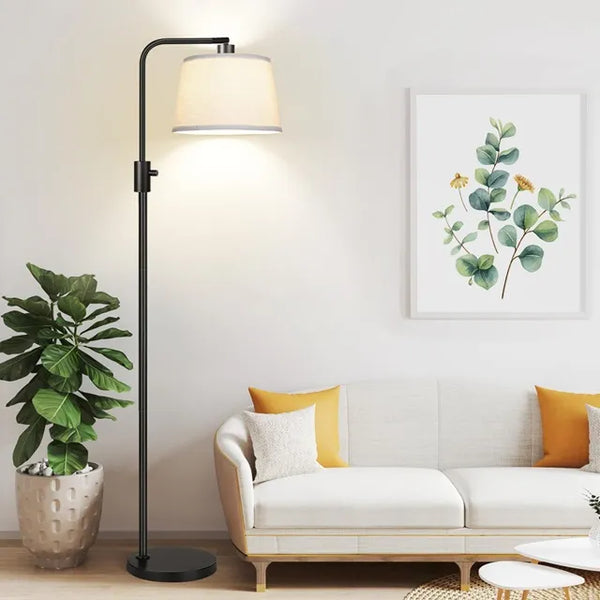
In the living room, floor lamps serve both functional and decorative purposes. They can provide general lighting, create a reading nook, or highlight art pieces. Choosing a lamp that aligns with your living room's style enhances its overall aesthetic while meeting your lighting needs.
Bedroom
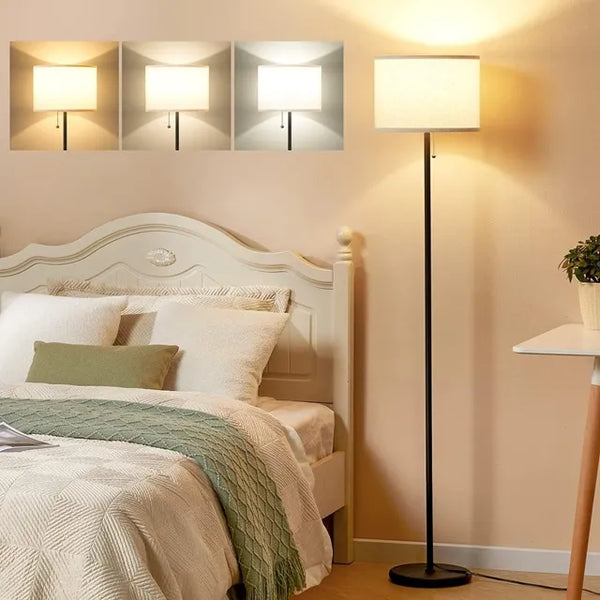
In the bedroom, floor lamps add a warm, soothing light, perfect for unwinding before bed. They can also serve as task lighting for reading. Opt for lamps with adjustable brightness to cater to both functionality and mood settings.
Office
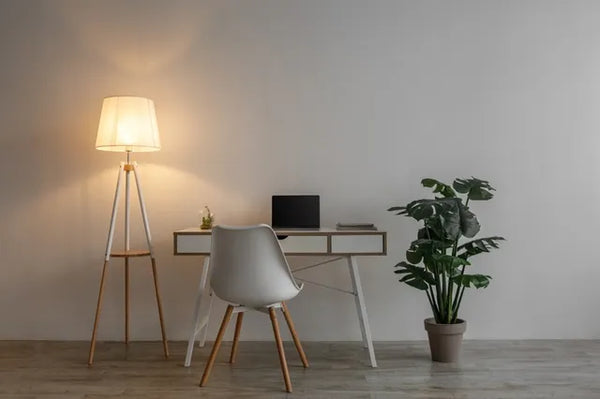
For office settings, floor lamps contribute to productivity by offering ample task lighting. They can also soften the harshness of overhead lights, reducing eye strain during long working hours. A floor lamp with an adjustable arm or head is ideal for directing light where it's needed most.
Lighting Technology in Floor Lamps
Types of light bulbs
LED (Light Emitting Diode) Lamps: LED technology is known for its energy efficiency and longevity. LED floor lamps consume less power and can last for thousands of hours, reducing the need for frequent bulb replacements. They offer a wide range of color temperatures, making them versatile for various settings.
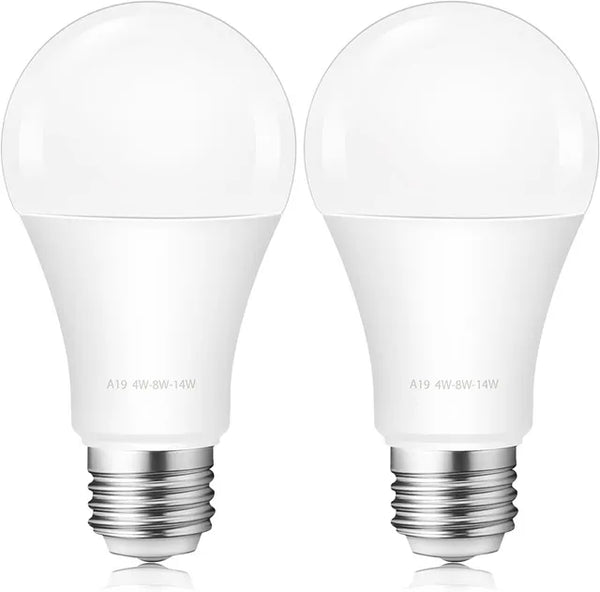
CFL (Compact Fluorescent Lamp): These lamps use a chemical reaction within a gas to produce light. Fluorescent bulbs are more energy-efficient than halogen lamps but less so than LEDs. They provide a bright, widespread light, suitable for general lighting in large spaces.
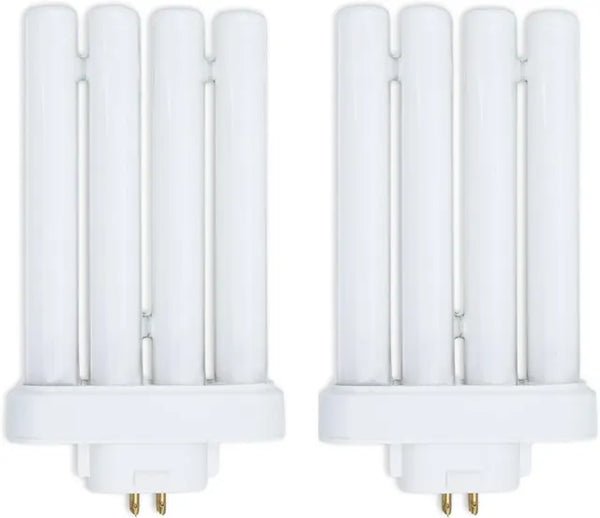
Halogen lamps: Halogen lamps(CFL) give off a bright, white light that is similar to natural sunlight. This makes them perfect for tasks that require clear visibility and accuracy. However, they are less energy-efficient than LED and fluorescent lamps and generate more heat.

Benefits of Energy-Efficient Lighting Options
Choosing energy-efficient lighting options like LED and fluorescent lamps for your floor lamp has several benefits:
Lower Energy Bills: Energy-efficient bulbs consume less electricity, significantly reducing your energy bills over time.
Reduced Environmental Impact: By using less power, these bulbs help reduce your carbon footprint, contributing to environmental conservation.
Longer Lifespan: LEDs and fluorescents last much longer than halogen bulbs, meaning you'll spend less time and money on replacements.
Versatility: Modern energy-efficient bulbs come in various colors and brightness levels. This allows you to adjust the lighting to match your preferences and requirements.
Placement and Positioning Tips for Floor Lamps
Moving your floor lamp to the right spot can make your room brighter and cozier. It will create a warm and welcoming feel. Here are some best practices for positioning floor lamps and using them to complement other light sources in a room.
Best Practices for Positioning Floor Lamps
Corner Placement: Placing a floor lamp in the corner of a room can help illuminate the space evenly. The light bounces off the walls, giving a gentle glow that improves the room's lighting without being too bright.
Next to Seating Areas: For reading or task lighting, position the lamp next to a couch, chair, or desk. Ensure the lamp is tall enough to cast light over your shoulder, reducing shadows and glare on your task at hand.
Avoid Direct Glare: Avoid direct glare by positioning the lamp so the bottom of the shade is at eye level when seated. This helps prevent discomfort and eye strain. This ensures the light is directed where needed without shining directly into your eyes.
Use as a Focal Point: A well-designed floor lamp can serve as a room's focal point. Place it next to key furniture pieces or in a bare space that needs visual interest. This not only adds style to the room but also provides functional lighting.
Related: Where to Put Floor Lamp in Living Room
Complementing Other Light Sources
Layered Lighting: Floor lamps should be part of a layered lighting strategy that includes ambient, task, and accent lighting. Use your floor lamp to fill in lighting gaps left by overhead lights and table lamps, creating a balanced and functional lighting scheme.
Harmonize Styles: Ensure your floor lamp's design complements other light fixtures and the room's overall decor. Matching materials, colors, or design elements can create a cohesive look that ties the room together.
Dimmable Options: If possible, choose a floor lamp with dimmable features. You can adjust the brightness of the light to match the other lights in the room. This will help create the perfect atmosphere for any time of day or activity.
Use adjustable floor lamps to direct light where needed, making other light sources in a room more effective. A lamp with a movable arm can make reading easier or showcase art, enhancing the room's lighting with depth.
Maintenance and Care for Your Floor Lamp
It's important to take care of your floor lamp. This will help it last longer and keep it shining brightly in your space. It will also ensure safety. Here are straightforward cleaning tips, for maintaining your floor lamp, handling bulb replacement, and electrical safety.
Tips for Cleaning and Maintaining Your Floor Lamp
Regular Dusting: Use a soft, dry cloth or a duster to gently remove dust from the lampshade and base. Avoid using abrasive cleaners that can damage the lamp's finish.
Stain Removal: For lampshades made of fabric, use a lint roller to remove dust and a damp cloth for stains. If your lampshade is made of glass or metal, a mild soap solution can help remove fingerprints and smudges.
Check the Cord: Regularly inspect the lamp's cord for any signs of wear or damage. Frayed or damaged cords pose a fire hazard and should be replaced immediately.
Stable Placement: Ensure your lamp is placed on a stable, level surface to prevent tipping. Avoid placing it in high traffic areas where it can be easily knocked over.
Bulb Replacement and Electrical Safety
Correct Wattage: Always use bulbs that comply with the lamp's maximum wattage rating. Using bulbs with a higher wattage can overheat the lamp and pose a fire risk.
LED Bulbs: Consider using LED bulbs for replacements. They are more energy-efficient, emit less heat, and have a longer lifespan than traditional bulbs.
Electrical Safety: When replacing a bulb or cleaning the lamp, always unplug it first. This prevents the risk of electric shock and ensures your safety while performing maintenance.
Get professional help for lamp electrical issues or cord replacement from an electrician or lamp repair service. DIY electrical repairs can be dangerous and are not recommended.
Before you leave
As we wrap up our exploration of floor lamps, remember that this is just the beginning of your journey to mastering home lighting.
For more insights, tips, and trends on finding the perfect floor lamp for your space, we invite you to continue your exploration with our comprehensive Floor Lamp Resources. Dive deeper into the world of lighting and let your creativity shine!
Related Articles
How to Choose a Floor Lamp - Expert Advice
Where to Put Floor Lamp in Living Room






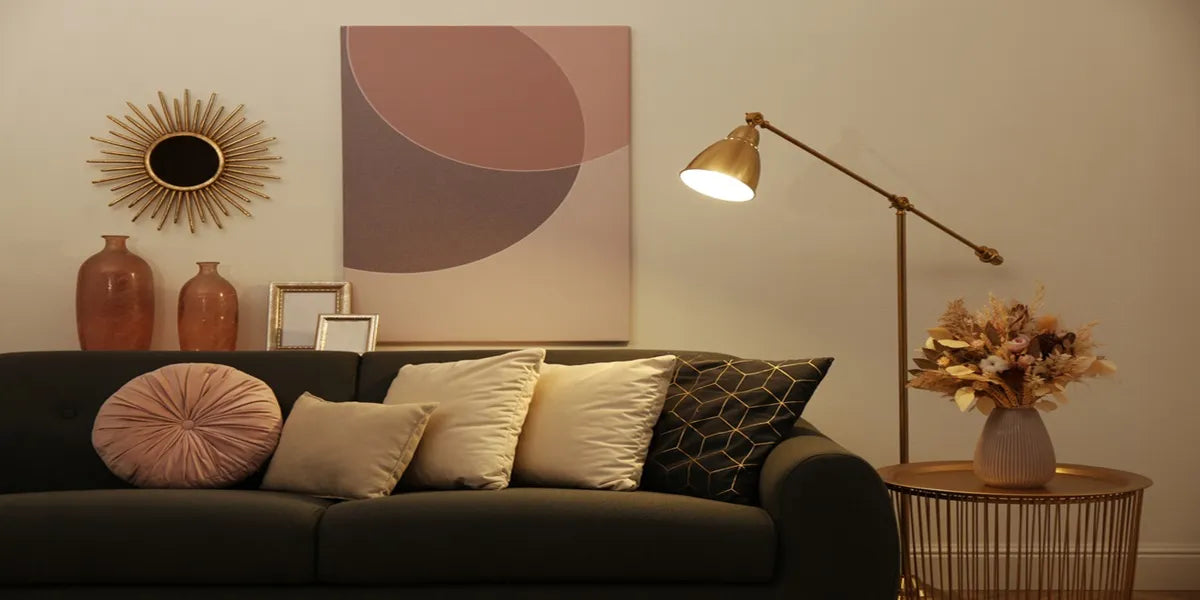
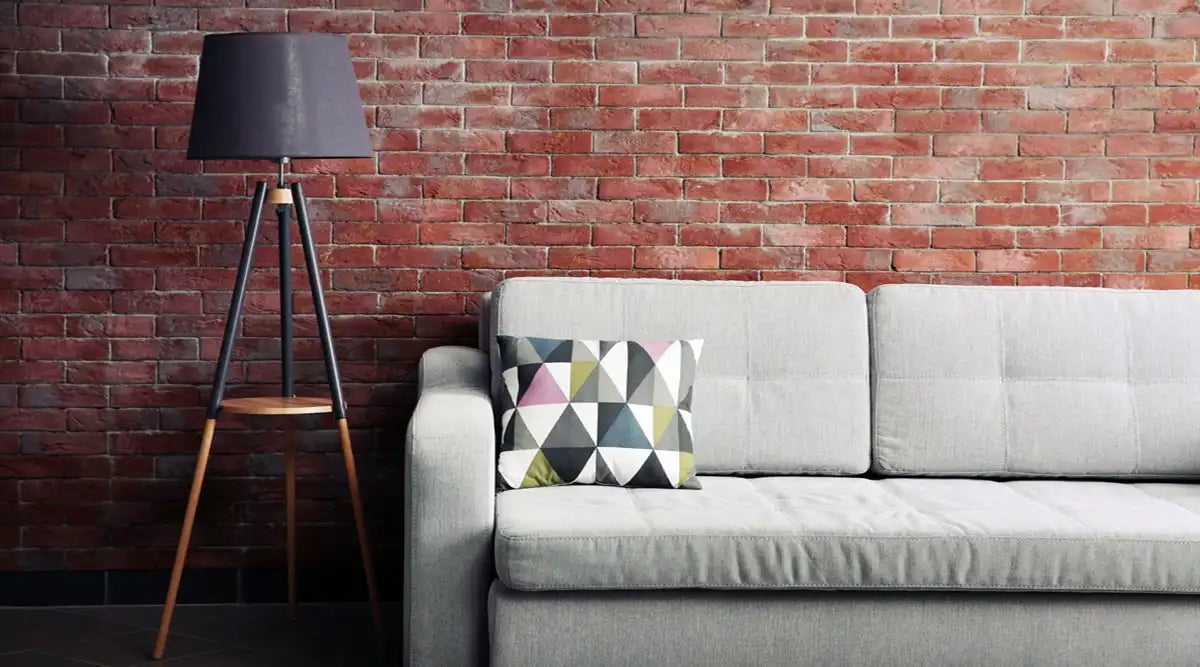
![How to Make Floor Lamp Taller [13 Different Ways]](http://www.sunmory.com/cdn/shop/articles/How-to-Make-Floor-Lamp-Taller_54a8cebf-160c-41df-bff9-113374f1afc8.webp?v=1747020791&width=1200)
Leave a comment
All comments are moderated before being published.
This site is protected by hCaptcha and the hCaptcha Privacy Policy and Terms of Service apply.